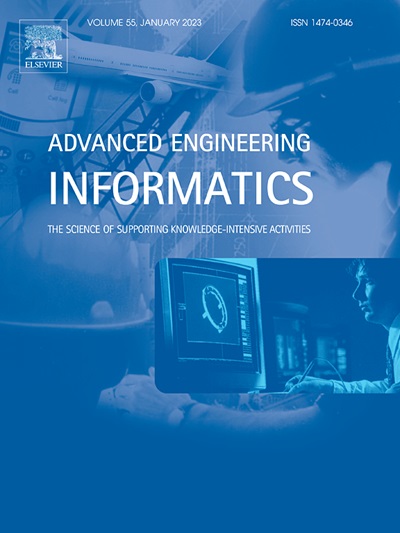Prediction of bearing remaining useful life based on a two-stage updated digital twin
IF 8
1区 工程技术
Q1 COMPUTER SCIENCE, ARTIFICIAL INTELLIGENCE
引用次数: 0
Abstract
As a pivotal element in industrial production, bearings are vital for the smooth functioning of the system. It is essential to accurately predict the remaining useful life (RUL) of bearings. Yet, the present methods for predicting RUL do not consider the real-time health state of bearing operation, resulting in poor RUL prediction accuracy. This paper proposes a method for bearing RUL prediction, based on a two-stage updating digital twin and a dual-correlation dynamic graph convolutional network (DC-DGCN), to address the aforementioned problems. First, a bearing defect evolution model with outer ring defect expansion characteristics is established, and the initial defect expansion curve is obtained in the first stage using multi-objective optimization. This process achieves real-time interaction between the twin model and the real bearing. Then, the calibrated defects in the second stage are used to further update the full life cycle defect curve. Bi-directional Long Short-Term Memory (Bi-LSTM) is utilized to correlate the vibration characteristics of the real bearing with the twin defects to complete the real-time mapping. Finally, the mapped defects are incorporated into the feature space used for RUL prediction, allowing the proposed DC-DGCN method to extract correlations between physical and digital space features for the final prediction. The suggested method effectively increases the veracity of bearing RUL prediction, as the experimental results prove.
求助全文
约1分钟内获得全文
求助全文
来源期刊

Advanced Engineering Informatics
工程技术-工程:综合
CiteScore
12.40
自引率
18.20%
发文量
292
审稿时长
45 days
期刊介绍:
Advanced Engineering Informatics is an international Journal that solicits research papers with an emphasis on 'knowledge' and 'engineering applications'. The Journal seeks original papers that report progress in applying methods of engineering informatics. These papers should have engineering relevance and help provide a scientific base for more reliable, spontaneous, and creative engineering decision-making. Additionally, papers should demonstrate the science of supporting knowledge-intensive engineering tasks and validate the generality, power, and scalability of new methods through rigorous evaluation, preferably both qualitatively and quantitatively. Abstracting and indexing for Advanced Engineering Informatics include Science Citation Index Expanded, Scopus and INSPEC.
 求助内容:
求助内容: 应助结果提醒方式:
应助结果提醒方式:


